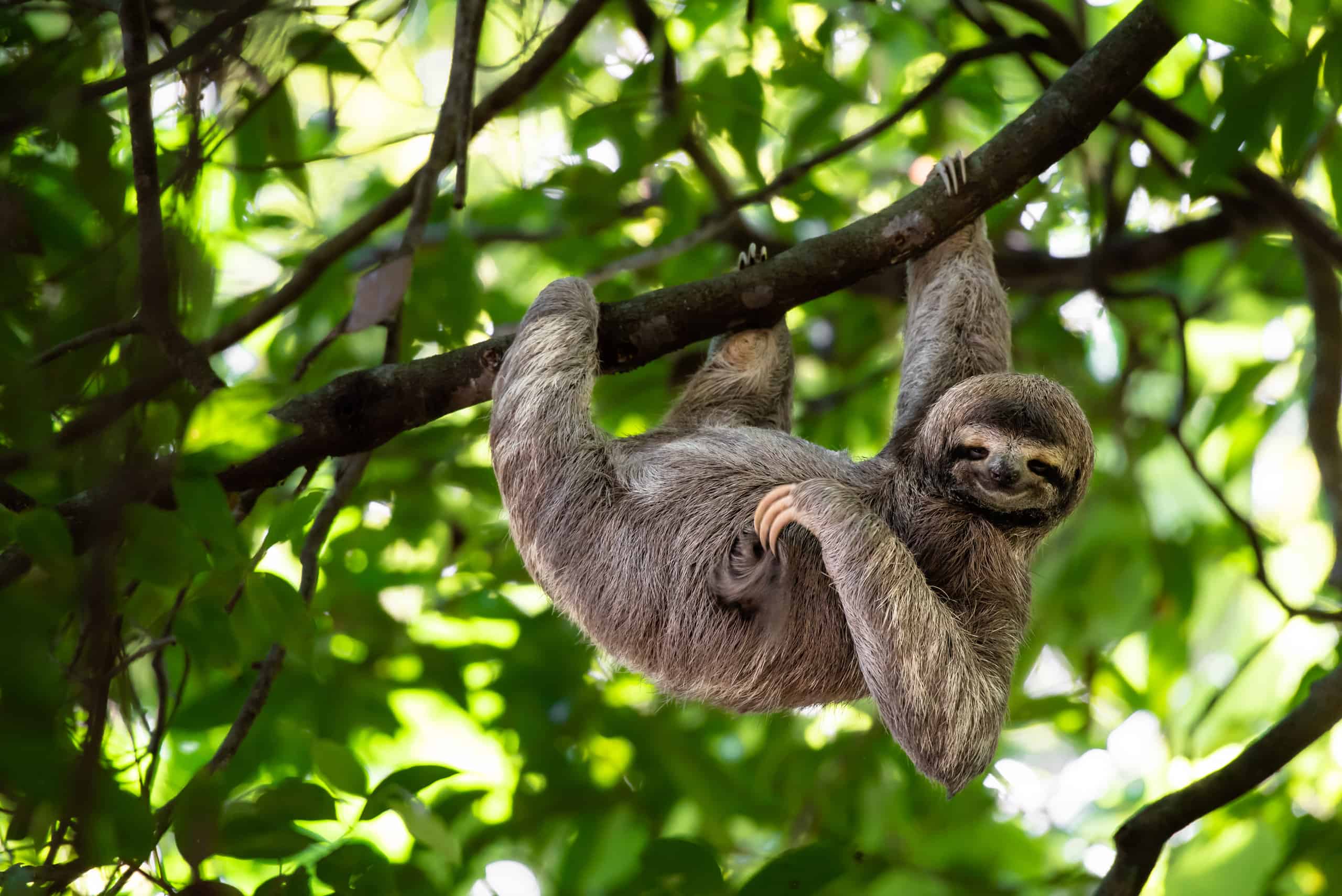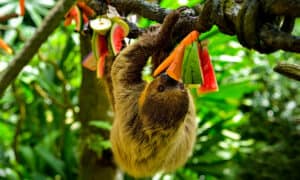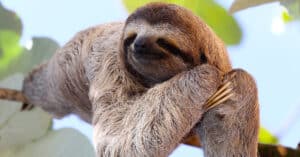Sloths are interesting creatures. They are the slowest and sleepiest animals in the jungle. With their funny furry faces and curious eyes, they hail from the jungles of Central and South America. These furry animals live in the trees of jungles and sleep a whopping 15-20 hours a day! But when they are awake, they are super slow. It’s a good thing they have a good metabolic rate!
Sloths have a place in our ecosystem that is important to preserve. But there are so many fascinating facts to know about this furry animal, so let’s find out more about this creature!
Types of Sloths
There are two types of sloths, believe it or not. Two-toed sloths are of the Choloepus genus, while three-toed sloths comprise the Bradypus genus. Although very similar in appearance, there are some differences that may stand out once you look closely. Two-toed sloths are bigger than their three-toed counterpart. Two-toed sloths will hang upside down, as opposed to their three-toed cousins that will usually sit on tree branches. And have you ever seen them and noticed they’re always smiling? Well, those are the three-toed sloths, the facial covering of which makes it look like they’re all smiles all the time.
According to the Sloth Appreciation Society, two-toed sloths actually have three toes, but only two fingers. That’s the reason they’re called two-toed sloths! The three-toed sloths do actually have three toes, and they also have three fingers.
The Sloth’s Sleep Habits
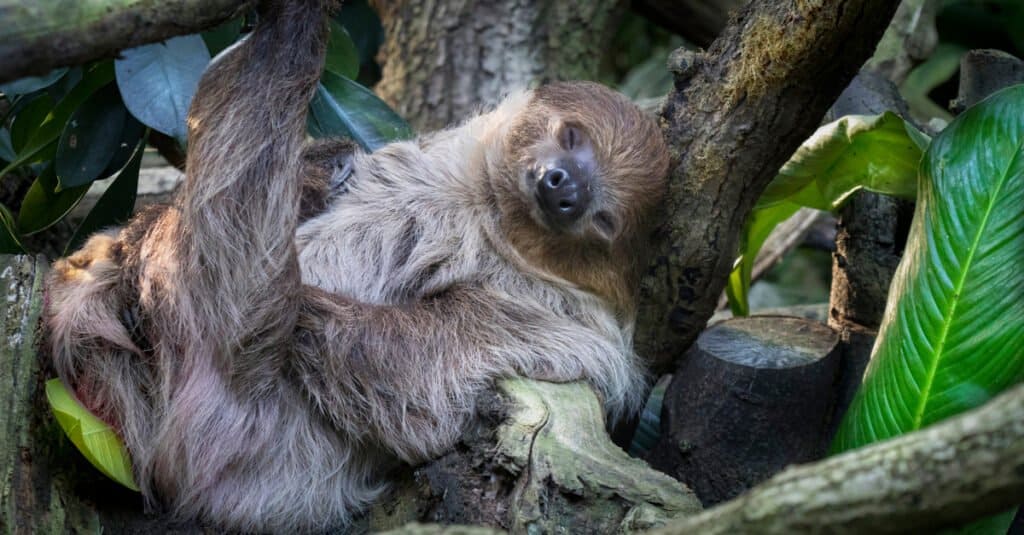
Sloths can sleep around 15-20 hours a day!
©milan noga/Shutterstock.com
Undeniably, sloths are one of the only animals in the world that sleep most of the day. The other one that you can think of is the koala. The extraordinary sleeping patterns and how slow they are when they are awake have confounded scientists throughout the years. When explorers discovered them, they stated that they were “the lowest form of existence,” which is why they were named after one of the seven deadly sins.
Sloths sleep around 15-20 hours per day and are very slow in doing things, mainly guarding the energy to climb up trees to sleep or to hunt for food. Their metabolic rate is a big factor in why sloths need to take care of their energy for carrying out essential duties.
Another reason why sloths are so slow and sleep mainly during the day is because they are almost completely blind. They are color-blind, but during the daytime, they can hardly see because they don’t have cone cells in their eyes. When they are awake, it’s usually during the night, when their visibility is slightly better.
Understanding Their Diet Habits
Sloths have interesting diets. Most animals eat things rich in protein and carbohydrates to give them energy. But sloths are a one-of-a-kind mammal. They eat leaves and twigs and sometimes even toxic leaves. Sometimes, in order to garner as much protein as they can, they will eat small insects or bird eggs. Their food takes days to digest, which means that they usually poop once a week. Once a week? Yes, believe it or not!
All of the food they eat throughout the week is stored in their stomach and about once a week, they will relieve themselves by digging up a hole in the ground. They can dispose of up to 30% of their body weight in just one poop. One of the reasons scientists have concluded on sloths’ weird pooping behavior is that they protect themselves from predators by only coming down once a week to relieve themselves.
Habitat: Unveiling the Jungle Homes of Sloths
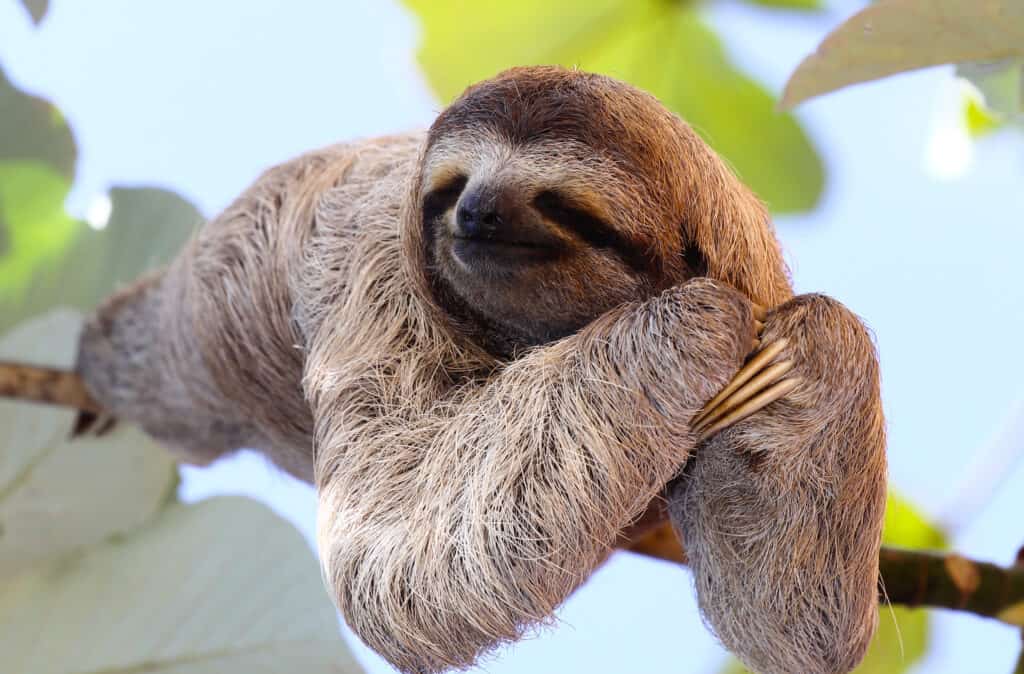
The sloth’s natural habitat is in a tree, perfect for sleeping, relaxing, and hanging upside down from branches!
©Janossy Gergely/Shutterstock.com
Let’s travel to the jungles of Central and South America. Deep in those jungles and rainforests are plants, trees, and other greenery. The dense nature is perfect living for the sloth. They love to live high up in the trees to avoid predators like the jaguar or the eagle. Sloths build canopies to relax, sleep, and eat in. They love to hang upside down from tree branches, too.
Because their jungle homes are in the trees, sloths have to have the strength of bodybuilders. They are incredibly strong in order to withstand hanging from trees and climbing up them once they have gone to the ground for food, pooping, and mating. On the odd chance they encounter water or if they jump from their tree homes into water, these mammals are much different than on the ground. They aren’t slow like a snail and are actually more agile and quick. They use their strong arms to swim and frolic around.
Predators and Threats: Assessing the Natural Threats to the Sloth Population
Like every mammal in the animal kingdom, sloths have predators that hunt them for food. The main predators they have to protect themselves from are jaguars and eagles. But sloths have advantages to avoid being prey.
Some scientists believe that their slow behavior is actually a defense mechanism against predators. Remember in Jurassic Park, when Dr. Alan Grant tells the rest of the characters that they shouldn’t move because the T. rex responds to movement? As sloths do things extremely slowly, they aren’t as noticeable to predators, thus escaping getting killed and eaten.
Another cool characteristic sloths have that protects them from predators is their thick fur. In their hairs grows blue-green algae. This can camouflage them from any animal wanting to attack the furry mammal. Of course, make sure you don’t snuggle up with a sloth. Their thick fur may have camouflaged algae, but it is also home to many bacteria, ticks, and other parasites.
Despite their survival tactics, the sloth experiences other natural threats, the main culprit of which being humans. Humans have ravaged forests and jungles, cutting down trees at a rapid pace. This deforestation has contributed to cutting down the sloth’s natural habitat and homes. This puts them at risk for potential extinction. In fact, the IUCN lists the pygmy three-toed sloth (Bradypus pygmaeus) as ‘Critically Endangered.’ Further, they list the maned three-toed (Bradypus torquatus) sloth as ‘Vulnerable.’
The Importance of Sloth Conservation
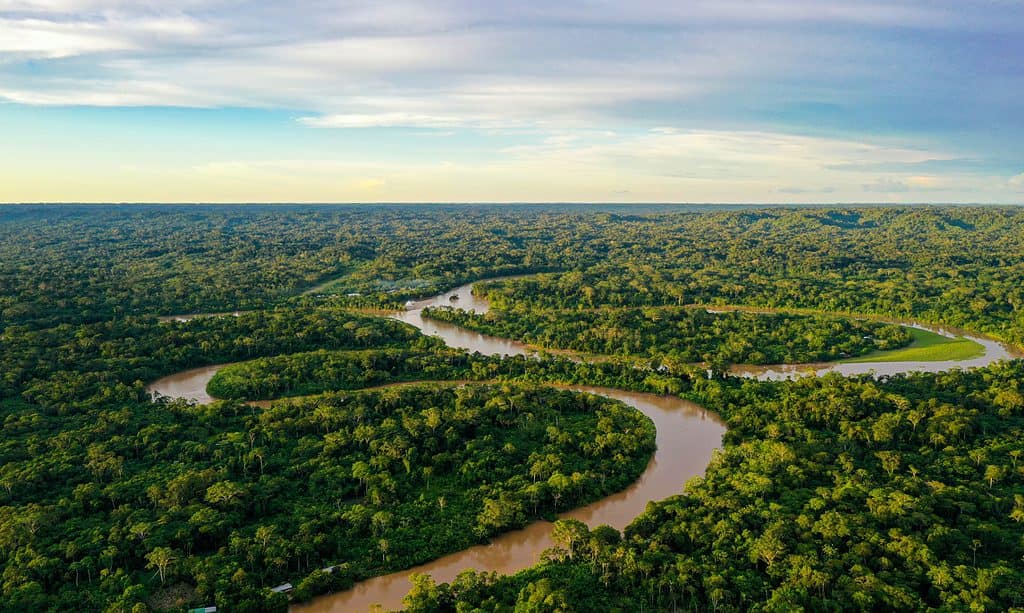
The Amazon rainforest is one of the locations where sloths live, but it is constantly in danger of deforestation by humans.
©iStock.com/JarnoVerdonk
Beyond those two species, other sloth species are not endangered yet. With the increasing amount of deforestation, though, they are at risk of being put on the list. Their natural habits are threatened every day and sloths can lose their food, resources, and homes. The World Wildlife Foundation has helped out the Brazilian government to raise funds in order to conserve and manage 150 million acres of the Amazon.
The Smithsonian Institution has even taken part in preventing habitat loss for sloths living in Central and South American rainforests. They recommend people use resources in a responsible way that helps protect the Amazon and ensure sloths don’t lose their natural habitats. The Smithsonian also encourages people to visit these furry animals at zoos.
Conclusion
Sloths are mammals that have a place in this world and have made contributions to our ecosystem. In fact, without the sloth, avocados would not exist. Avocados have become famous for making toast more enjoyable and adding that delicious taste to already delicious tacos. The story goes that the extinct giant sloths were able to digest and process whole avocado seeds. They then spread those avocado seeds all over their natural habitats, thus ensuring we enjoy the delicious taste of those green fruits.
Not only did they contribute to the emergence of avocados, but they also host many species of invertebrates in their fur. And remember that green algae and fungi that are found on their fur? It has been studied and tested, and scientists found it can fight against cancer and other illnesses.
Scientists have been amazed and confused by the sloths’ weird behavior, which makes this furry animal a fascinating mammal to study and learn about. The sloth is a unique animal and many have studied their weird behavior. Their place in this ecosystem is one that should be cared for by ensuring we plant more trees, protect the world’s rainforests, and prevent deforestation.
Thank you for reading! Have some feedback for us? Contact the AZ Animals editorial team.

